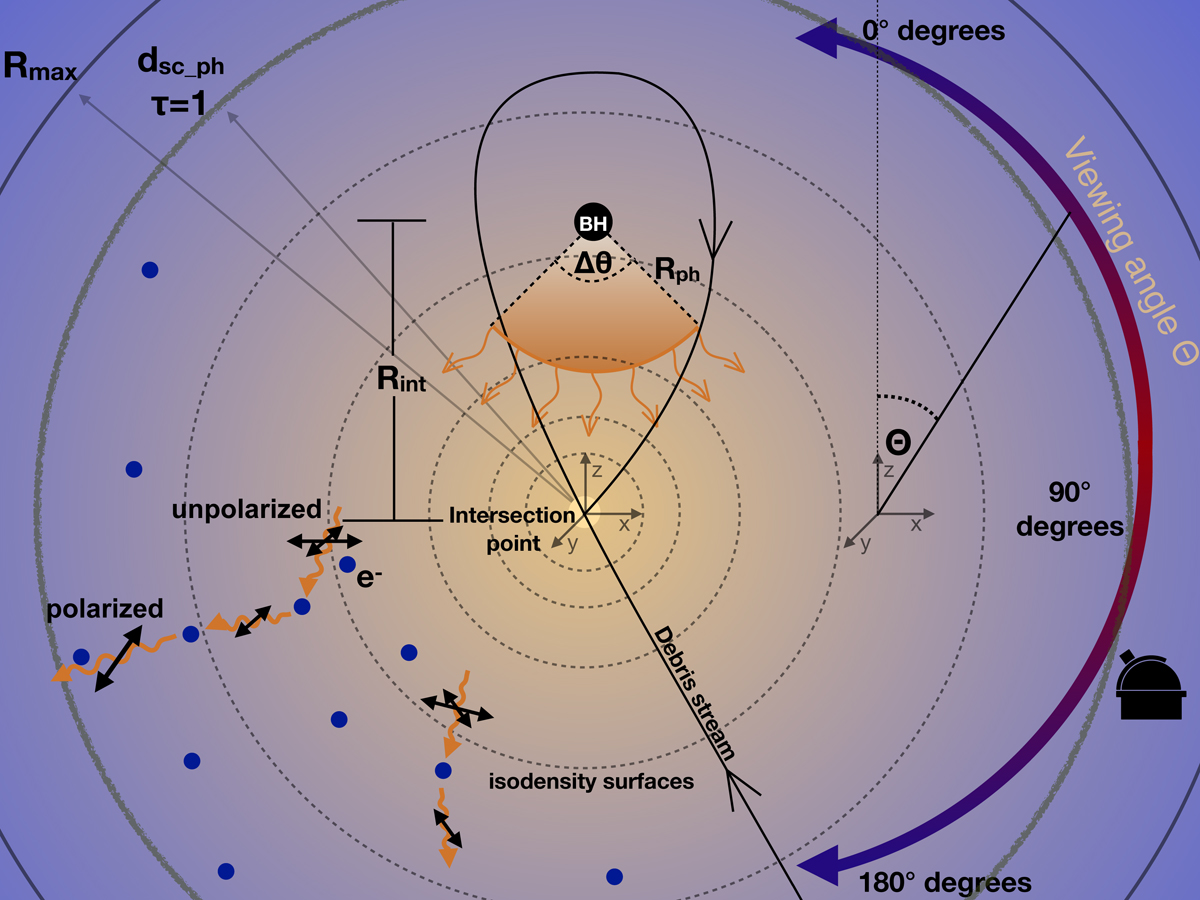Fig. 1.

Download original image
Schematic illustration (not to scale) of the CIO scenario (Lu & Bonnerot 2020) modeled in this work. The BH lies at a distance Rint from the debris stream intersection point from which the CIO is launched. Photons are generated on a sphere of radius Rph centered on the BH and within a cone of opening angle Δθ aligned with the negative z axis. The electron scattering photosphere where the optical depth is τ = 1 is located at a distance dsc_ph from the intersection point while the surrounding sphere of radius Rmax corresponds to the outer radius of our grid. We exploit the model symmetry about the z axis and extract polarization levels for 21 viewing angles in the xz plane, equally spaced in cosine (ΔcosΘ = 0.1) between a north-polar (cosΘ = 1, face-on) and a south-polar (cosΘ = −1, face-off) orientation. Photons are unpolarized when they are injected from the photosphere and they become polarized after scattering with an electron (visualized as blue circles). Depending on the direction they travel, they are scattered toward the observer either with an electric field oscillating in the horizontal direction (i.e., with a negative q, see Eq. (14)) or with an electric field oscillating in the vertical direction (i.e., with a positive q).
Current usage metrics show cumulative count of Article Views (full-text article views including HTML views, PDF and ePub downloads, according to the available data) and Abstracts Views on Vision4Press platform.
Data correspond to usage on the plateform after 2015. The current usage metrics is available 48-96 hours after online publication and is updated daily on week days.
Initial download of the metrics may take a while.


